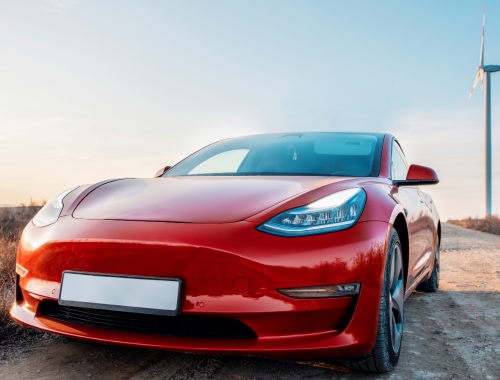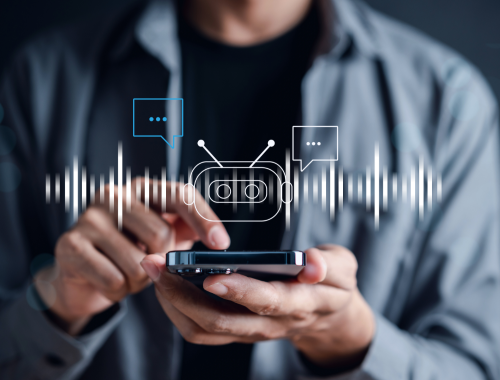Difference Between Tesla’s AI and OpenAI’s GPT-3
Both Tesla’s AI and OpenAI’s GPT-3 are large language models (LLMs) that have been trained on massive datasets of text and code. They can produce text, translate languages, write various types of creative material, and provide you with answers to your questions in an informative way. The two models, however, differ significantly in certain important ways. In this article, we look at the key differences between Tesla’s AI and OpenAI’s GPT-3.

Tesla AI
Tesla, the electric vehicle, and clean energy company founded by Elon Musk, has been working on developing AI technologies for its autonomous driving systems. Tesla’s AI is primarily focused on creating self-driving cars.
They use a combination of hardware, including cameras, radar, ultrasonic sensors, and a powerful onboard computer, to collect and process data from the vehicle’s surroundings in real-time. This data is then used to make decisions about driving, such as steering, accelerating, and braking. Tesla’s Autopilot and Full Self-Driving (FSD) features are the results of their AI research and development.

OpenAI GPT-3
GPT-3, short for Generative Pre-trained Transformer 3, is a more powerful and versatile large language model (LLM) created by OpenAI, an artificial intelligence research organization. It’s a state-of-the-art language model that has been trained on a massive amount of text from the internet.
It has the ability to generate human-like text, complete sentences, and even paragraphs. It’s really impressive what GPT-3 can do; it can write articles, pen poetries, answer questions, chat with lifelike responses, summarize complex documents, and even write code. It’s designed to understand and generate text in a way that is impressively close to human language comprehension.
Difference between Tesla’s AI and OpenAI’s GPT-3
Primary Function – Primarily designed for autonomous driving, Tesla’s AI focuses on analyzing sensor data from the vehicle’s surroundings and making driving decisions to achieve self-driving capabilities. GPT-3, on the other hand, is a text-based language model designed for natural language understanding and generation. Its primary function is to process and generate human-like text based on the input it receives.
Training Data & Size – Tesla’s AI has been trained on extensive datasets related to driving scenarios, road conditions, and vehicle behavior to develop the skills needed for autonomous driving. GPT-3, on the other hand, has a much larger number of parameters than Tesla’s AI. It’s trained on a dataset of text and code that is much larger than the dataset used to train Tesla’s AI. This means that GPT-3 is exposed to a wider variety of languages and can generate more creative and informative text.
Hardware – Tesla’s AI utilizes a combination of hardware components, including cameras, radar, ultrasonic sensors, and a powerful onboard computer, to collect and process data for driving decisions. GPT-3, on the other hand, runs on cloud-based servers with powerful GPUs and CPUs for efficient text generation and processing.
Applications – Tesla’s AI is now used in its vehicles to power features like the voice-activated infotainment system and the Autopilot driver assistance system. Although GPT-3 is still under development, it has the potential to be used in a wide range of applications, including virtual assistants, machine translation, and chatbots. In fact, there are many companies that are built largely or entirely on GPT-3.
Tesla’s AI vs. OpenAI’s GPT-3: Comparison Chart

Summary
In a nutshell, while both Tesla’s AI and OpenAI’s GPT-3 are large language models with exceptional text generation capabilities, they serve distinct purposes and find applications in different domains. Tesla’s AI enhances the automotive industry with self-driving technology. GPT-3, on the other hand, offers versatile language processing capabilities for a wide range of text-based tasks, including content writing, translation, and information retrieval.
FAQs
What is the difference between OpenAI and GPT?
OpenAI is an artificial intelligence research and deployment organization, while GPT is a family of language models developed by OpenAI. In essence, OpenAI is the organization responsible for creating various AI models, and GPT is one of their prominent achievements in the field of natural language processing.
Is OpenAI the same as GPT-3?
No, OpenAI is the organization that developed GPT-3 and many other AI language models. GPT-3 is a specific language model within the GPT series created by OpenAI. It’s one of their most advanced language models.
What makes GPT-3 different?
GPT-3 is one of the largest language models in existence, with about 175 billion parameters. This extensive training allows GPT-3 to generate highly coherent and contextually relevant text across a wide range of tasks, making it exceptionally versatile.
Is GPT-3 the most advanced AI?
GPT-3 is one of the most advanced AI models in the world, but it is not the only one. There are other models that are comparable or even more advanced, such as Google’s LaMDA and DeepMind’s Chinchilla.
Which AI is better than GPT-3?
Some of the AI models that are considered to be comparable or even better than GPT-3 are LaMDA, BLOOM, Gopher, GPT-JT, Megatron-Turing Natural Language Generation (MT-NLG), etc.
Who is the competitor of OpenAI GPT-3?
Some possible alternatives to GPT-3 include BLOOM, Chinchilla, GLaM, AlexaTM, Gopher, OPT-175B, etc.
- Difference Between Caucus and Primary - June 18, 2024
- Difference Between PPO and POS - May 30, 2024
- Difference Between RFID and NFC - May 28, 2024
Search DifferenceBetween.net :
Leave a Response
References :
[0]Saxena, Asha. The AI Factor: How to Apply Artificial Intelligence and Use Big Data to Grow Your Business Exponentially. Post Hill Press, 2023.
[1]Pashentsev, Evgeny. The Palgrave Handbook of Malicious Use of AI and Psychological Security. Springer Nature, 2023.
[2]Tingiris, Steve and Bret Kinsella. Exploring GPT-3: An unofficial first look at the general-purpose language processing API from OpenAI. Packt Publishing, 2021.
[3]Image credit: https://www.canva.com/photos/MAFfQdxpKbk-parked-red-tesla-model-3-at-sunset/
[4]Image credit: https://www.canva.com/photos/MAFajGVXCGA-businessman-using-chatbot-in-smartphone-intelligence-ai-chat-gpt-chat-with-ai-artificial-intelligence-developed-by-openai-generate-futuristic-technology-robot-in-online-system-/
